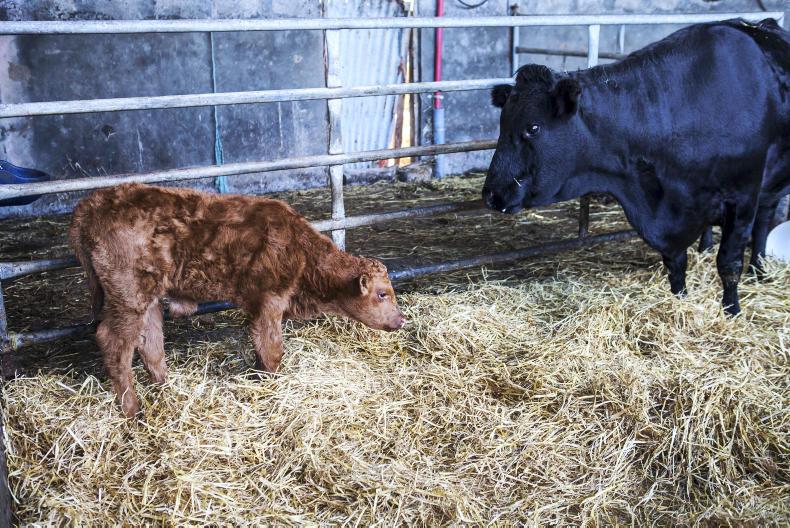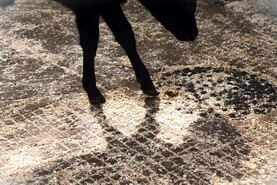On Tullamore Farm, our vet Donal Lynch has emphasised the importance of colostrum, its production and getting it into calves quickly in terms of keeping calves healthy and disease-free.
Our list of colostrum sources in order of preference are:
1. Dam colostrum;2. Other on-farm dam colostrum;3. Neighbouring farm colostrum;4. Artificial colostrum. All cows are vaccinated for scour on the farm and immunity is attained via dam colostrum, so it’s critical that calves receive adequate colostrum within the first hours of life.
The advice on Tullamore Farm is that if a calving is assisted, colostrum needs to be manually fed. The reason behind this is that if a calf is stressed in any way, it may disrupt nature and alter the instinct to suck.
In terms of amounts, the recommended feeding levels are 3.2 litres for a 40kg calf and 3.6 litres for a 45kg calf fed within two hours.
Last year, good results were achieved by feeding 0.5kg soya daily two to three weeks before calving.
This raises the protein level in the diet and ensures a good supply of good quality colostrum at calving.
Clipping cows’ tails before calving is also good practice and reduces the chances of dirty udders and the chance of the calf ingesting faecal material and reduce disease incidence.
Read more
Save our sucklers: sign our open letter
Beef management: preparing for calving
On Tullamore Farm, our vet Donal Lynch has emphasised the importance of colostrum, its production and getting it into calves quickly in terms of keeping calves healthy and disease-free.
Our list of colostrum sources in order of preference are:
1. Dam colostrum;2. Other on-farm dam colostrum;3. Neighbouring farm colostrum;4. Artificial colostrum. All cows are vaccinated for scour on the farm and immunity is attained via dam colostrum, so it’s critical that calves receive adequate colostrum within the first hours of life.
The advice on Tullamore Farm is that if a calving is assisted, colostrum needs to be manually fed. The reason behind this is that if a calf is stressed in any way, it may disrupt nature and alter the instinct to suck.
In terms of amounts, the recommended feeding levels are 3.2 litres for a 40kg calf and 3.6 litres for a 45kg calf fed within two hours.
Last year, good results were achieved by feeding 0.5kg soya daily two to three weeks before calving.
This raises the protein level in the diet and ensures a good supply of good quality colostrum at calving.
Clipping cows’ tails before calving is also good practice and reduces the chances of dirty udders and the chance of the calf ingesting faecal material and reduce disease incidence.
Read more
Save our sucklers: sign our open letter
Beef management: preparing for calving






 This is a subscriber-only article
This is a subscriber-only article









SHARING OPTIONS: